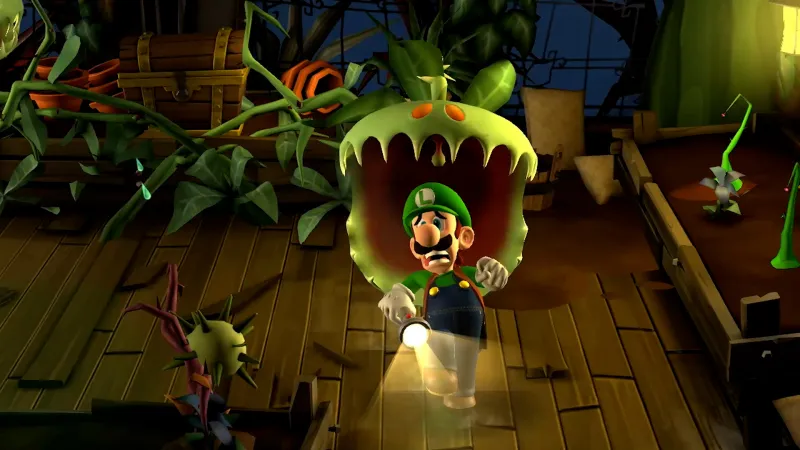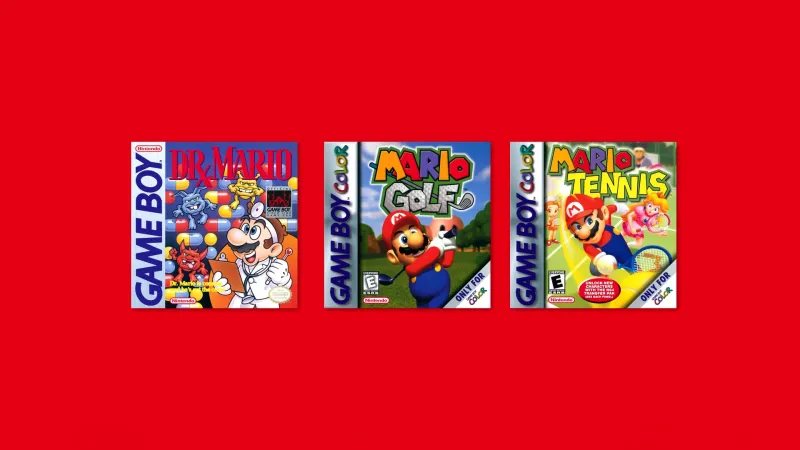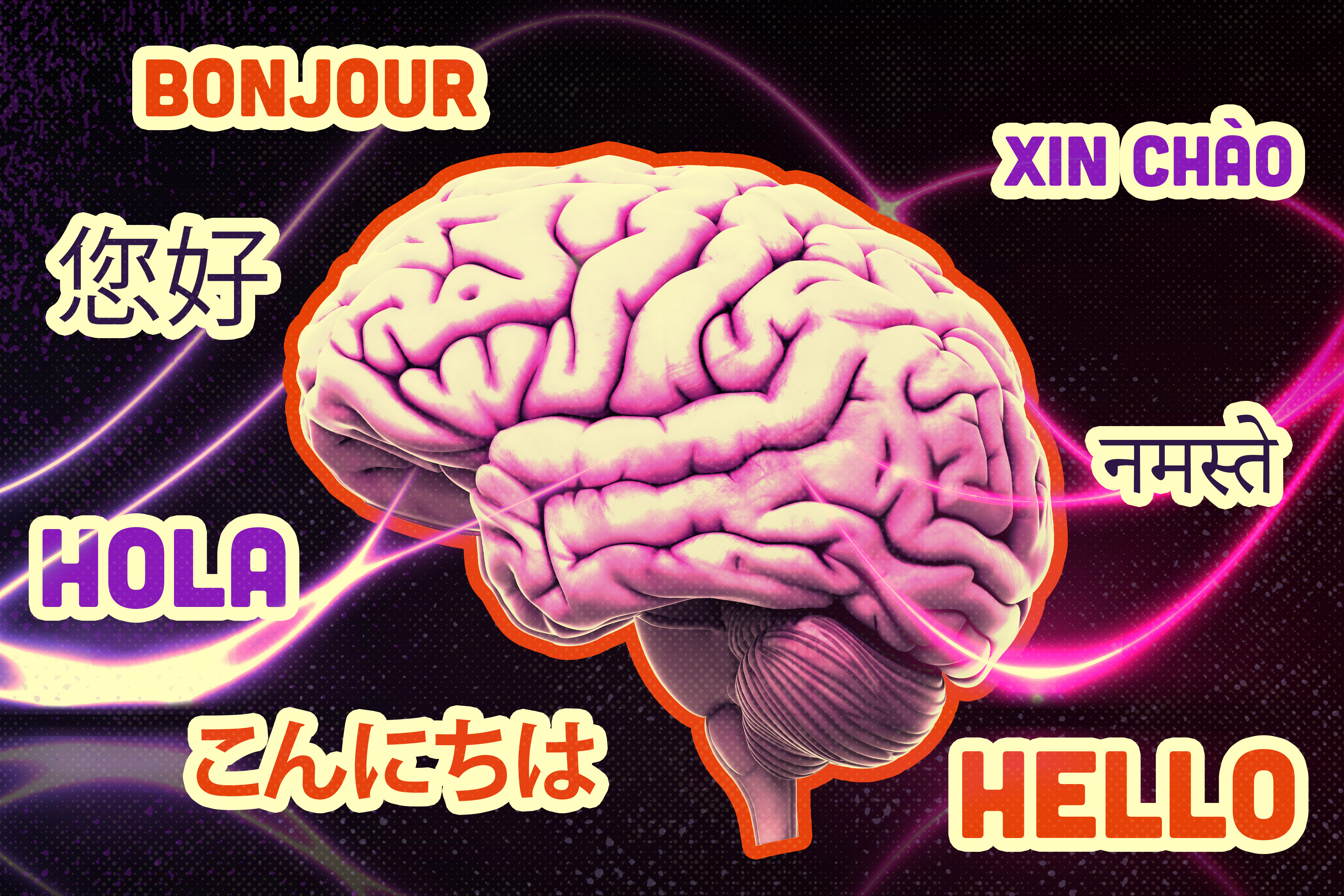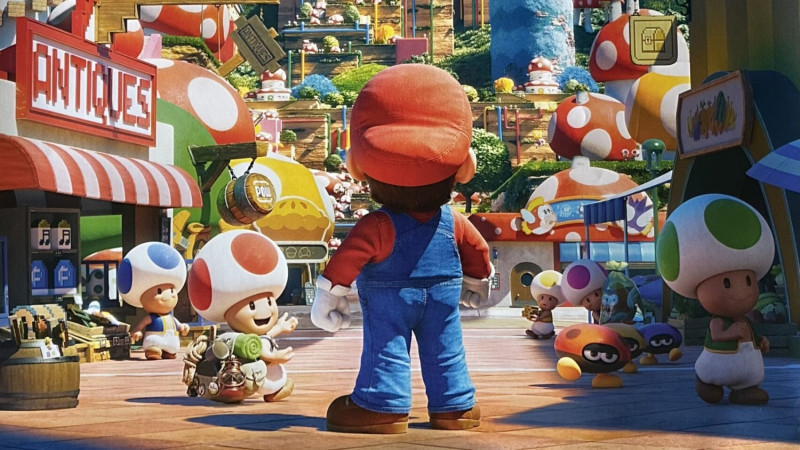A Special Issue of the Journal of Exposure Science & Environmental Epidemiology co-edited by Yale School of Public Health Associate…
Paper Mario: The Thousand-Year Door Release Date Set For May

The beloved GameCube RPG, Paper Mario: The Thousand-Year Door, finally has a release date for Switch. Announced during September 2023’s Nintendo Direct, Paper Mario: The Thousand-Year Door is regarded by many as the pinnacle of Mario’s RPG outings, and since today is Mario Day, Nintendo took the opportunity to let fans know when they’d be able to play the remaster on Nintendo’s hybrid console.
We still don’t have many details for this version, but we do know that Paper Mario: The Thousand-Year Door features improved graphics. It joins a collection of titles starring Mario and his friends over the last several months, including Super Mario Bros. Wonder, Mario vs. Donkey Kong, Princess Peach: Showtime, and the upcoming Luigi’s Mansion 2 HD.
[embedded content]
Paper-Mario: The Thousand-Year Door arrives exclusively on Nintendo Switch on May 23. For our review of the latest Paper Mario game, The Origami King, head here.
Luigi’s Mansion 2 HD Screams Onto Switch In June

Released more than a decade ago, Luigi’s Mansion: Dark Moon is a little tricky to go back to in 2024 thanks to its 3DS exclusivity. However, during last September’s Nintendo Direct, we learned that this well-liked sequel is making the leap to Switch as Luigi’s Mansion 2 HD, joining the third entry in the hybrid console’s catalog. Today, Nintendo announced that Luigi and his Poltergust 5000 will return to Switch in June.
When it arrived on 3DS in 2013, it received strong review scores, including an 8.5 from Game Informer. This sequel actually involves the younger Mario Bro visiting a series of mansions to capture ghosts and rescue Mario from King Boo. You can see the reveal trailer for Luigi’s Mansion 2 HD below.
L[embedded content]
Luigi’s Mansion 2 HD arrives on Nintendo Switch on June 27. If you just can’t wait to bust ghosts as Mario’s brother, be sure to check out Luigi’s Mansion 3, which is perhaps one of the most underrated first-party games on Switch. You can read our review of Luigi’s Mansion 3 here.
Three Mario Spin-Offs Coming To Nintendo Switch Online’s Game Boy Catalog

To close out its Mario Day announcements video, where we learned about a new movie set in the world of Super Mario Bros, as well as the release dates of Paper Mario: The Thousand-Year Door and Luigi’s Mansion 2 HD, Nintendo revealed that three classic Mario spin-offs are arriving on Nintendo Switch Online this week. The games join the Game Boy library, which is included with the base Nintendo Switch Online subscription ($20 a year).
Dr. Mario from Game Boy, Mario Golf from Game Boy Color, and Mario Tennis from Game Boy Color join the Switch Online Game Boy catalog. The collection already includes the likes of Super Mario Land 2 – 6 Golden Coins, Kirby’s Dream Land 2, The Legend of Zelda: Link’s Awakening DX, Tetris, The Legend of Zelda: Oracle of Ages, The Legend of Zelda: Oracle of Seasons, and Metroid II – Return of Samus. Oddly enough, the library is missing all of the Pokémon titles, as well as the original Super Mario Land.
Dr. Mario, Mario Golf, and Mario Tennis arrive on the service this Tuesday, March 12.
MIT Leads the Way in AI-Driven Warehouse Efficiency
In an era increasingly defined by automation and efficiency, robotics has become a cornerstone of warehouse operations across various sectors, ranging from e-commerce to automotive production. The vision of hundreds of robots swiftly navigating colossal warehouse floors, fetching and transporting items for packing and shipping, is…
For people who speak many languages, there’s something special about their native tongue

A new study of people who speak many languages has found that there is something special about how the brain processes their native language.
In the brains of these polyglots — people who speak five or more languages — the same language regions light up when they listen to any of the languages that they speak. In general, this network responds more strongly to languages in which the speaker is more proficient, with one notable exception: the speaker’s native language. When listening to one’s native language, language network activity drops off significantly.
The findings suggest there is something unique about the first language one acquires, which allows the brain to process it with minimal effort, the researchers say.
“Something makes it a little bit easier to process — maybe it’s that you’ve spent more time using that language — and you get a dip in activity for the native language compared to other languages that you speak proficiently,” says Evelina Fedorenko, an associate professor of neuroscience at MIT, a member of MIT’s McGovern Institute for Brain Research, and the senior author of the study.
Saima Malik-Moraleda, a graduate student in the Speech and Hearing Bioscience and Technology Program at Harvard University, and Olessia Jouravlev, a former MIT postdoc who is now an associate professor at Carleton University, are the lead authors of the paper, which appears today in the journal Cerebral Cortex.
Many languages, one network
The brain’s language processing network, located primarily in the left hemisphere, includes regions in the frontal and temporal lobes. In a 2021 study, Fedorenko’s lab found that in the brains of polyglots, the language network was less active when listening to their native language than the language networks of people who speak only one language.
In the new study, the researchers wanted to expand on that finding and explore what happens in the brains of polyglots as they listen to languages in which they have varying levels of proficiency. Studying polyglots can help researchers learn more about the functions of the language network, and how languages learned later in life might be represented differently than a native language or languages.
“With polyglots, you can do all of the comparisons within one person. You have languages that vary along a continuum, and you can try to see how the brain modulates responses as a function of proficiency,” Fedorenko says.
For the study, the researchers recruited 34 polyglots, each of whom had at least some degree of proficiency in five or more languages but were not bilingual or multilingual from infancy. Sixteen of the participants spoke 10 or more languages, including one who spoke 54 languages with at least some proficiency.
Each participant was scanned with functional magnetic resonance imaging (fMRI) as they listened to passages read in eight different languages. These included their native language, a language they were highly proficient in, a language they were moderately proficient in, and a language in which they described themselves as having low proficiency.
They were also scanned while listening to four languages they didn’t speak at all. Two of these were languages from the same family (such as Romance languages) as a language they could speak, and two were languages completely unrelated to any languages they spoke.
The passages used for the study came from two different sources, which the researchers had previously developed for other language studies. One was a set of Bible stories recorded in many different languages, and the other consisted of passages from “Alice in Wonderland” translated into many languages.
Brain scans revealed that the language network lit up the most when participants listened to languages in which they were the most proficient. However, that did not hold true for the participants’ native languages, which activated the language network much less than non-native languages in which they had similar proficiency. This suggests that people are so proficient in their native language that the language network doesn’t need to work very hard to interpret it.
“As you increase proficiency, you can engage linguistic computations to a greater extent, so you get these progressively stronger responses. But then if you compare a really high-proficiency language and a native language, it may be that the native language is just a little bit easier, possibly because you’ve had more experience with it,” Fedorenko says.
Brain engagement
The researchers saw a similar phenomenon when polyglots listened to languages that they don’t speak: Their language network was more engaged when listening to languages related to a language that they could understand, than compared to listening to completely unfamiliar languages.
“Here we’re getting a hint that the response in the language network scales up with how much you understand from the input,” Malik-Moraleda says. “We didn’t quantify the level of understanding here, but in the future we’re planning to evaluate how much people are truly understanding the passages that they’re listening to, and then see how that relates to the activation.”
The researchers also found that a brain network known as the multiple demand network, which turns on whenever the brain is performing a cognitively demanding task, also becomes activated when listening to languages other than one’s native language.
“What we’re seeing here is that the language regions are engaged when we process all these languages, and then there’s this other network that comes in for non-native languages to help you out because it’s a harder task,” Malik-Moraleda says.
In this study, most of the polyglots began studying their non-native languages as teenagers or adults, but in future work, the researchers hope to study people who learned multiple languages from a very young age. They also plan to study people who learned one language from infancy but moved to the United States at a very young age and began speaking English as their dominant language, while becoming less proficient in their native language, to help disentangle the effects of proficiency versus age of acquisition on brain responses.
The research was funded by the McGovern Institute for Brain Research, MIT’s Department of Brain and Cognitive Sciences, and the Simons Center for the Social Brain.
New Super Mario Bros. Animated Movie Announced For 2026 Release

Coming off last year’s overwhelming success of The Super Mario Bros. Movie, Nintendo and Illumination have announced that work has begun on a second movie set in the world of Super Mario Bros. The announcement, made by Nintendo’s Shigeru Miyamoto and Illumination CEO Chris Meledandri, states that this film will arrive in theaters in the United States on April 3, 2026.
While the announcement stops short of calling this “Super Mario Bros. 2” or even referring to it as a sequel, Miyamoto confirms that Nintendo and Illumination are working together on this one, and the director duo of the first film, Aaron Horvath and Michael Jelenic, are returning. “As for the details of the new movie, as I often say, we’ll let you know once we’re at the stage where we’re ready to share more,” Miyamoto said in the announcement video posted on Nintendo of America’s YouTube channel. “This time, we’re thinking about broadening Mario’s world further and it’ll have a bright and fun story. We hope you’ll look forward to it!”
The Super Mario Bros. Movie stars Chris Pratt, Anya Taylor-Joy, Charlie Day, Jack Black, Keegan-Michael Key, and Seth Rogen. Nintendo and Illumination have yet to confirm any of the cast of this new film set in the Super Mario Bros. world. The Super Mario Bros. Movie arrived in theaters on April 5, 2023 to positive fan and critic reception, and earned a place among the highest-grossing films of all time. The new film set in this same world is set to arrive almost exactly three years later on April 3, 2026.
Marine algae implants could boost crop yields – Technology Org
Scientists have discovered the gene that enables marine algae to make a unique type of chlorophyll. They successfully…
Museums’ vertebrate collections go online — in 3D – Technology Org
The Museum of Vertebrate Zoology (MVZ) at the University of California, Berkeley, contains more than 300,000 vertebrate specimens…
Can I Solve Science?
A brilliant essay by Stephen Wolfram explores this challenging question….
